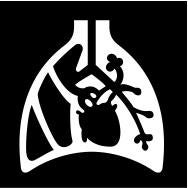Air Quality
Air pollution is especially harmful to the elderly and the very young, as well as those who exercise outdoors, have respiratory conditions and spend more time breathing polluted air. This includes people living close to freeways and ports, workers exposed to air pollution at their jobs and those living in homes with compromised indoor air quality.
Air pollutants come from three types of sources:
- Area sources, such as dry cleaners and lawn mowers
- Stationary sources, such as factories and power plants
- Mobile sources, such as cars and trucks
Planning decisions and land-use patterns greatly influence stationary and mobile sources of air pollution. For example, both stationary sources and auto traffic can create local air pollution “hot spots.” Locating stationary sources away from vulnerable populations is one way to avoid exposing people to high levels of pollution. Other land-use strategies that can improve air quality include planting and maintaining greenery and urban forests and conserving open space.12
Because transportation is a major source of air pollution, planning and land-use strategies that reduce the number and length of automobile trips are key to improving public health. Short automobile trips in urban settings generate more pollution but also have the highest potential to be replaced by walking or biking. However, increasing cycling and walking (sometimes referred to as active transportation) requires safe, appealing and feasible routes to make these choices convenient and pleasant for residents.





